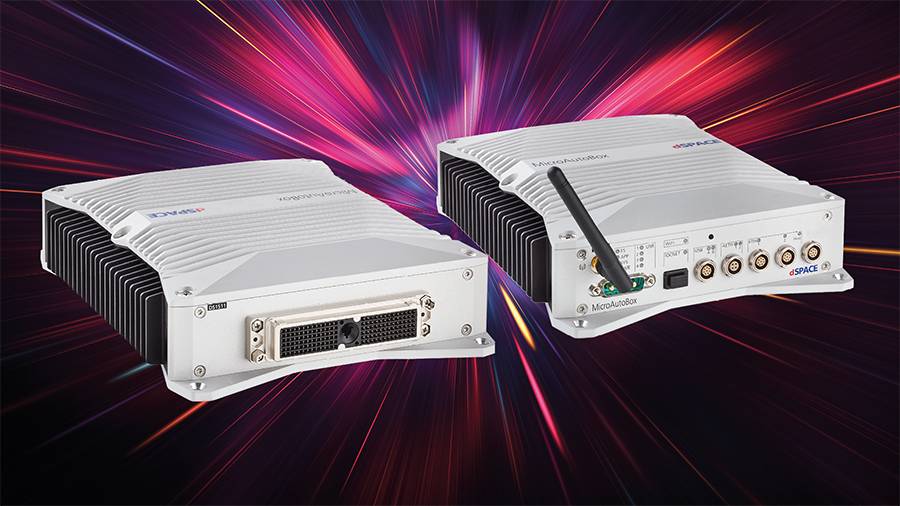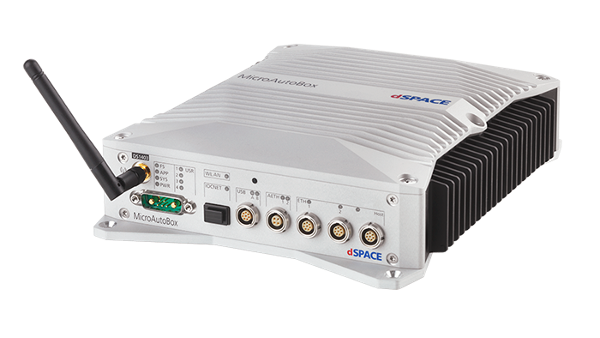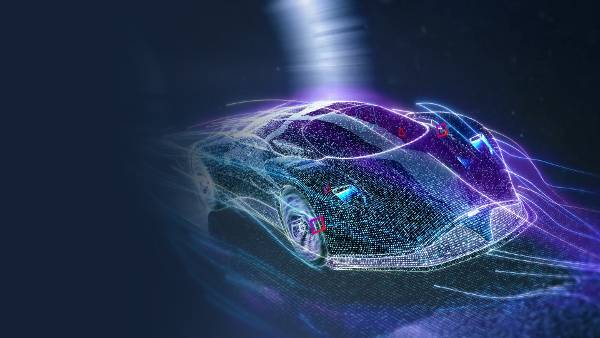As far as the development and validation of automated and autonomous functions in vehicles are concerned, manufacturers see themselves faced with ever greater challenges. Increasingly complex tasks have to be overcome by the technology, for which also technically sophisticated solutions are required. e:fs TechHub GmbH has focused on the problem of growing complexity and has developed a solution which enables complex test processes to be simplified significantly.
From a Series Vehicle to Test Vehicle Without Much Effort
With LeanDRA (Lean Driving Robot & Analysis), e:fs has developed a tool chain that transforms each of the VW company’s production vehicles into a test vehicle quickly and with little hardware effort.
“The aim of LeanDRA is to provide driving functions that enable driverless operation of the vehicle. Motion planning for complex test scenarios can also take place outside the vehicle, for example, in a control station,” explains Tobias Behn, Manager GT2 | Zentrale Technologien, e:fs TechHub GmbH.
The software is thus implemented as a communication layer between the driving function and the vehicle bus (CAN, FlexRay, or Ethernet). This gives it access to the available hardware and software in the vehicle, e.g., to sensors and actors. All functions in the vehicle can then be controlled via the system – even using a controller from a gaming console. Furthermore, detailed information can be accessed via the vehicle system, and the system can be configured as required for any application. A key component of the LeanDRA overall system is a MicroAutoBox III from dSPACE.
This means users can manage the following and further functions:
- Controlling the overall system: from a switched-off vehicle to autonomous use
- Remotely starting a vehicle
- Selecting a gear
- Releasing the parking brake
- Accelerating/braking
- Steering
- Signaling to turn
- Sounding the horn
- Windshield wiper
Test Environment Just Like in Real Life
LeanDRA can be used to collect information about driver interaction and vehicle behavior during automated driving and thus facilitate decisions for adding new functions. Due to the lack of bulky hardware such as driver robots, a real driver can experience the test case exactly as it is later in the production vehicle and can thus drive normally.
Simulating traffic situations with multiple vehicles is possible with LeanDRA, which in turn is necessary for the validation and development of driver assistance systems and highly automated driving (ADAS/HAD) with corner cases. All vehicles can be controlled via the system and always know their position thanks to global navigation satellite system (GNSS). With the appropriate infrastructure, these scenarios can also be carried out without a safety driver.
Put compactly: The entire system, which also works with older product versions, takes up very little space in the vehicle.© e:fs TechHub GmbH
Safety Implemented
Safety also plays a significant role during the tests. This includes the constant monitoring of all relevant system values. In an emergency, multiple scenarios are possible:
- Predefined delay and switching off of the vehicle, also if part of the system fails
- Predefined emergency trajectory
- Handover in case of an error to the safety driver on two levels:
- Software-based fallback level: The driver then has the vehicle available again in normal series operation.
- Hardware-based fallback level: Manipulating components are switched off.
- Connection to an external emergency stop system is also possible.
Both the safety system and the decision on which functions should be controlled are implemented on the MicroAutoBox III. Behn explains: “We spent a long time looking for the right hardware and ultimately, we found it at dSPACE."

MicroAutoBox III is a real-time system for performing fast function prototyping in the vehicle. The powerful system can be added to an ECU or it can even replace the ECU. In addition, ECU functions can be experienced and tested with it in a real environment. Therefore, the MicroAutoBox III enables safe further development of automated and autonomous driving.




